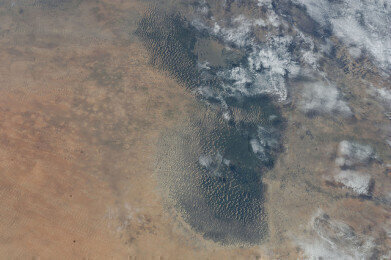Water/Wastewater
Can Lake Chad Be Saved?
Apr 07 2018
Once the fourth largest lake in Africa, Lake Chad has been shrinking rapidly over the last few decades. In the 1960s, the lake covered up to 10,000 square miles – today, its extent is a mere fraction of that, at an estimated 520 square miles.
The majority of that shrinkage came prior to the 80s, through the effects of an exploding population, climate change and uncontrolled irrigation. At the time, an Italian company suggested an elaborate restoration scheme which was shunned back then. Now, it may finally come to fruition.
A critical situation
Over the last 40 years, it’s believed that Lake Chad may have lost up to 95% of its surface area. Given that it’s an incredibly shallow lake (a mere 11m at its deepest) and that it has served as the primary water source for over 30 million people, it’s easy to see why every centimetre counts with regards to its volume.
While the fringes of the lake were once bustling with fishing boats and its surrounding environs full of the sounds and smells of a prosperous market, today the area has become synonymous with poverty, destitution and ruin. In turn, this has contributed to growing violence in the region, as more and more disillusioned youths turn to extremist groups to eke out a living.
Falling on deaf ears
Back in 1982, the Italian engineering outfit Bonifica Spa undertook the rehabilitation of the lake by proposing the creation of Transaqua, a 1,500-mile canal to siphon off water from the mighty Congo River into the water-starved region. By diverting 100 billion cubic metres of Congolese water every year, the canal could revitalise the lake and provide energy to the local populace through the construction of several hydroelectric dams along its route.
“I sent one of our engineers to the USA, to purchase the only reliable maps of Africa, which were made by the US Air Force and were the only maps with contour lines,” explains Marcello Vichi, one of the engineers at Bonifica Spa in charge of the idea. “After a couple of months of solitary study, I announced to the then chief executive that this thing could be done. The response was a deafening silence.”
Dusting off old plans
While the 1985 effort to make African governments and international financial institutions sit up and take notice of Lake Chad’s problem fell on deaf ears, the current turmoil in the region has prompted authorities to reassess the feasibility of Bonifica Spa’s ambitious idea. PowerChina – a contributing company to the construction of the Three Gorges Dam in China – are partnering with the original Italian company to raise £35 billion for the project.
Those behind the idea say that it will consume under 8% of the water which the Congo currently empties into the Atlantic Ocean, thus having a negligible effect on the status quo. They have also offered assurances that it will not upset the ongoing Grand Inga Dam initiative in the Democratic Republic of Congo, which aims to construct the world’s biggest hydroelectric generator. Although the Transaqua project is still in its infancy, it could be the best last hope for saving Lake Chad.
Digital Edition
IET 34.2 March 2024
April 2024
Gas Detection - Biogas batch fermentation system for laboratory use with automatic gas analysis in real time Water/Wastewater - Upcycling sensors for sustainable nature management - Prist...
View all digital editions
Events
Apr 30 2024 Melbourne, Australia
Apr 30 2024 Birmingham, UK
May 03 2024 Seoul, South Korea
May 05 2024 Seville, Spain
May 06 2024 Minneapolis, MN, USA


















